| Reviews & Columns |
|
Reviews DVD TV on DVD Blu-ray 4K UHD International DVDs In Theaters Reviews by Studio Video Games Features Collector Series DVDs Easter Egg Database Interviews DVD Talk Radio Feature Articles Columns Anime Talk DVD Savant Horror DVDs The M.O.D. Squad Art House HD Talk Silent DVD
|
DVD Talk Forum |
|
|
| Resources |
|
DVD Price Search Customer Service #'s RCE Info Links |
|
Columns
|
|
|
Cardboard Bernini, The
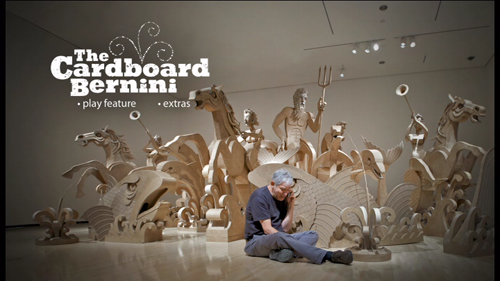
The Movie:
What's the purpose of art?
Olympia Stone's casual 2012 documentary The Cardboard Bernini attempts to answer that loaded question. Mostly, however, the film serves as an easygoing portrait of one such artist, the affable James "Jimmy" Grashow, as he works on a monumental version of a Baroque Italian fountain, its imposing gods, horses and fish rendered entirely in glue and common cardboard.
Despite its lightweight appearance, The Cardboard Bernini grapples with a lot of questions that artists ask themselves. Things such as: how do we reconcile our creativity with making money? Is art any more meaningful if it has an audience of one, or 1,000, or millions? And: what can we leave that will last? Here, we follow Grashow as he spends untold hours on a project that will ultimately be seen by a few hundred people at most in a gallery, then transported to an outdoor setting where the wind and rain ultimately turns the sculpture into a soggy mess. Grashow's jokey, hippie-dad vibe seems to say this is all a big farce, but in reality it's a touching gesture that is often beautiful to behold.
Besides getting into the nitty gritty of constructing the cardboard fountain, the film spends a lot of time simply getting to know Grashow and his family. With the funky demeanor of that favorite college art professor you once had, Grashow retraces the events in his life that brought him to where he is today. Growing up in 1950s Brooklyn informed the urban funkiness of his work, a deliberately disheveled cross between Red Grooms and Claes Oldenberg. He was active in the '60s avant garde scene in Greenwich Village, and yet his insanely detailed woodcut style was accessible enough to allow a decent living as an illustrator (doing work for The New York Times and album covers for the likes of Procol Harum). His wife of 40-plus years is on hand to share a few stories, along with his daughter, who discusses the dichotomy between her dad's cheery exterior and the pain in his work.
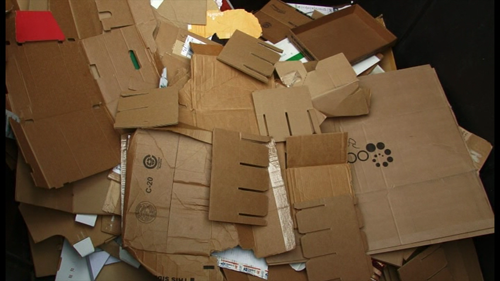
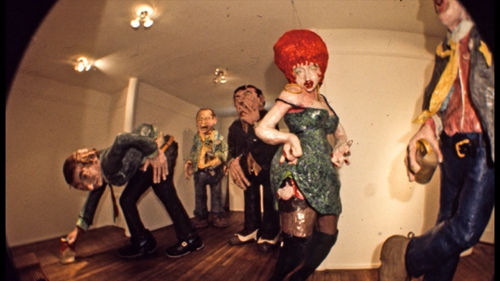
The impetus for the cardboard fountain is revealed when Grashow shares an anecdote about visiting the home of his longtime dealer, Allen Stone, shortly after he died. It was then that he learned of the fate of several giant-sized papier maché figures he constructed for a 1970s art installation - Stone took them home and dumped them in his backyard, where they were exposed to the elements for several years. Instead of being upset, the weathered beauty of the figures came as something of an epiphany to Grashow. The fact that art is always in a state of transformation, whether intended or not, now informs Grashow's work - especially the fountain. The process is well-covered, going through the months of construction ("It's the back of the fish scales, which nobody's gonna see."), through a joyous gallery showing in which patrons are encouraged to write wishes on cardboard coins and toss them onto the piece, and finally the emotional journey as it's moved outdoors to be battered by rain and wind outside an art museum in Connecticut
Director Olympia Stone, who is the daughter of Grashow's late dealer, has an intimacy with her subject that shows throughout the film. Although her filmmaking technique is somewhat plain and home movie-ish at times, Grashow's casual ease with the filmmakers during every step of the process is obvious. Absorbing as it is, the film is padded out by about 20 minutes with needlessly drawn-out montages. The choice of backing many scenes with distracting, generic sounding bluegrass music could also be called into question. Still, the accessibility of Grashow's work (he's definitely not an abstract or conceptualist kind of guy) makes this a diverting watch even for those who don't particularly care for contemporary art.
The Cardboard Bernini certainly counts as a breezy doc which can be enjoyed on its own low-key, PBS-like merits. There were also some profound passages in this film, however, that reminded me of "Finishing the Hat," Stephen Sondheim's poetically observant song from Sunday in the Park with George. It really comes down to art being a solitary passion - in my case, I do sketching (for fun) and occasional illustrating (for money), along with running an online store of literature-themed screen prints which sells just enough to buy the supplies needed to make more prints. I also maintain a tumblr blog, 4 Color Cowboy, in which the subtle continuation of Western-kitsch imagery is likely unnoticed by anyone but me (Is it art? I think so.). The point, as this film plainly makes clear, is that the success of art isn't measured by gobs of money or a huge audience. The spirit of sharing, and the artist's own satisfaction with his/her own handiwork, is what really counts.
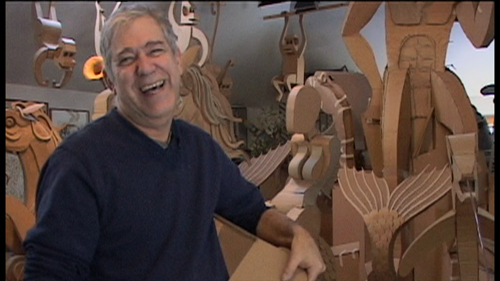
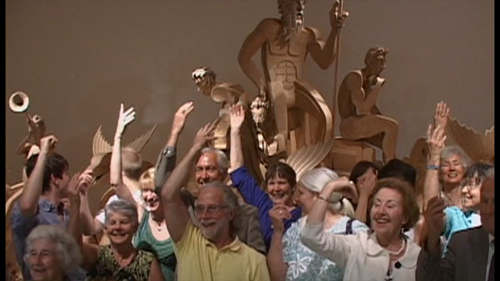
The DVD:
Buyer alert: the packaging doesn't mention it, but Microcinema's disc edition of The Cardboard Bernini is not a regular, commercially pressed DVD. It's a made-to-order product pressed on a blue DVD-R disc. The process doesn't affect the quality of the film, but those who avoid m.o.d.s ought to know.
Video
Umm, not so good. The 16:9 anamorphic letterboxed image has pleasant color and a nice light/dark balance, but the scenes filmed in Grashow's studio (about 75% of the film) have a pronounced pixelization. While it's unknown whether the shoddy image is due to bad mastering or sub-standard video equipment being used during production, the blocky image is distracting and gives this disc a cheapness that the subject matter doesn't deserve.
Audio
The Cardboard Bernini's stereo soundtrack is a plain, decently mixed affair with surprisingly not too much echo or distortion. No subtitles or alternate audio are present.
Extras
In addition to a brief Trailer and Production Photos, there's about six minutes of bonus footage of Jimmy explaining his techniques and philosophies.
Final Thoughts:
Accompanying artist James Grashow as he constructs an elaborate cardboard sculpture designed to wither away in the rain, The Cardboard Bernini has the ability to charm while sneaking in some profound thoughts about permanence and the purpose of art. The documentary (and the disc it's burned on) is a little scrappy around the edges, but creative types would enjoy it. Recommended.
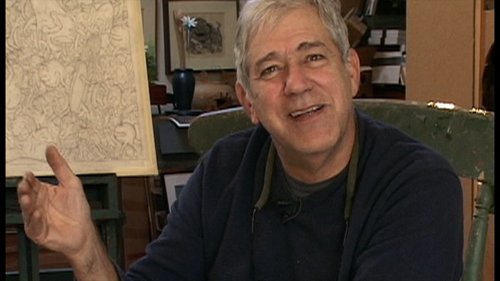
Matt Hinrichs is a designer, artist, film critic and jack-of-all-trades in Phoenix, Arizona. Since 2000, he has been blogging at Scrubbles.net. 4 Color Cowboy is his repository of Western-kitsch imagery, while other films he's experienced are logged at Letterboxd. He also welcomes friends on Twitter @4colorcowboy.
|
| Popular Reviews |
| Sponsored Links |
|
|
| Sponsored Links |
|
|
| Release List | Reviews | Shop | Newsletter | Forum | DVD Giveaways | Blu-Ray | Advertise |
|
Copyright 2024 DVDTalk.com All Rights Reserved. Legal Info, Privacy Policy, Terms of Use,
Manage Preferences,
Your Privacy Choices | |||||||















